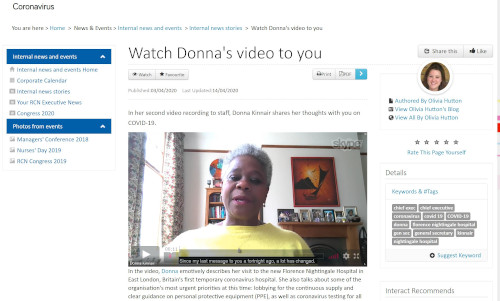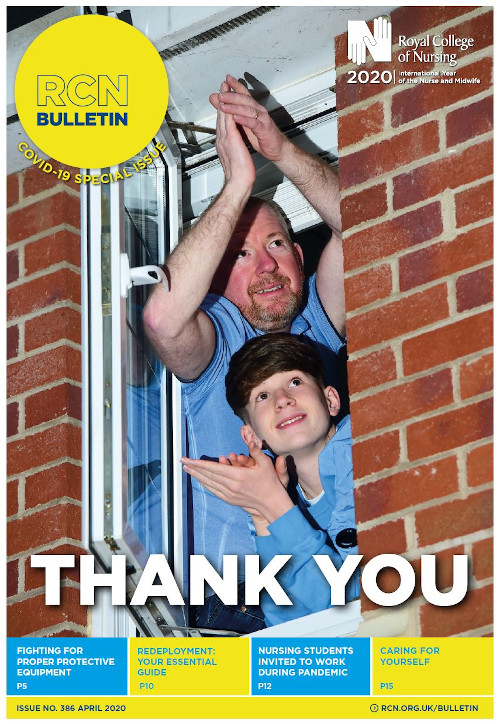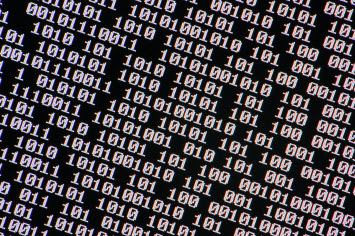Archives Hub feature for November 2020
Now more than ever as we continue to battle the COVID-19 pandemic, the world is reliant on its digital infrastructure; the need to provide and access accurate and up-to-date information is of paramount importance. This raises some interesting questions, challenges and opportunities for archive services who can play their part in the collective response to the crisis by capturing and recording events, activities and decisions. Archives and recordkeeping professionals have always supported the notions of accountability and transparency through their work, something which is being demonstrated in real time during the development of the pandemic.
As the UK’s largest trade union and professional association for nurses, the Royal College of Nursing (RCN) has been supporting and representing nurses and healthcare workers throughout the pandemic. It is vital that records of how this has been done are available to the organisation in perpetuity as evidence of advice given and decisions taken. The RCN has a responsibility to its members to be able to demonstrate that the organisation has been working in their best interests and the interests of their patients. In turn, the RCN archive has a responsibility to ensure that records with evidential and research value are captured, preserved and accessible to right audiences at the right time.

As a result, like many of our archivist and recordkeeping colleagues across the world, we have created a COVID-19 archive. Since the beginning of the year the RCN archive team have been actively collecting records relating to COVID-19 from across the organisation to build up a picture of how the pandemic has unfolded through the eyes of RCN members and staff. Unsurprisingly, this covers a wide range of record types and digital formats: web crawls of special COVID-19 webpages containing up-to-date guidance and advice, targeted staff emails, member surveys on working conditions and PPE, General Secretary’s video messages, special committee situation reports, newly created online nursing resources, publications – the list could go on. Within this set of records is a complex combination of access requirements and restrictions which, through balancing business confidentiality with public interest, we will manage alongside the records themselves.
We are in the fortunate position of having a remotely accessible network and a digital archive, which has meant that we have been able to collect these records as they have been created and start uploading them to our digital archive straight away. While some of the records we’re collecting as part of the COVID-19 archive project would have been transferred to us anyway, there are several new record series on our 2020 collecting plan as a result of the pandemic. For example, our first venture in web archiving was a test crawl of the RCN COVID-19 webpages; these are now collected regularly and form an integral part of the COVID-19 archive. Having seen and been inspired by the experiences of other archives already running successful daily web crawls to capture public advice and the public response, we decided to capture our pages daily as well – this ensured that we were keeping up to speed with each piece of new advice and guidance shared on the webpages. As the rate of updates to the pages has slowed, we have since reduced the frequency to weekly, although we continue to monitor them, ready to capture more frequently if needed. This was the pilot web archiving project we didn’t know we were doing until it happened, and it has in turn has sparked interest in a larger web archiving project to capture the whole RCN website, which is well underway.

Alongside the collecting of material, we have been considering how the records of the COVID-19 archive will fit into our existing catalogue structure. While it would be easy to create a new Fonds for COVID-19, we realised that this view was being skewed by our thoughts about future access to the material, and the ease at which colleagues or researchers would be able to view all the material neatly packaged together. Instead we plan to preserve the context of the records by arranging them by creator, in our case this is mostly the department of origin, to fit within our existing catalogue structure. There will be occasions when it is important to view all COVID-19 records together to get a complete picture of the reaction and response to the pandemic, so using the ‘linked collection’ feature in our digital archive we plan to create a virtual COVID-19 collection containing records from across different record series to allow this level of access. Beyond this we are considering which records from our COVID-19 archive will be shared on our public digital archive website to ensure the transparency and accountability that creating the COVID-19 archive in the first place helps to achieve.
We have certainly learnt a lot this year and the team has upskilled, becoming more proficient and confident in processing a wide range of digital formats, from collection through to access. Our sector has also stepped up by providing online webinars and training events to share our experiences of this extraordinary time. In May we participated in a panel discussion facilitated by Preservica, our digital archive supplier, who generously donated 250GB of storage space for us to store the COVID-19 archive. At the event we shared our plans and projects for collecting COVID-19 records with the archive community alongside colleagues from a wide range of institutions. These included Network Rail, who have been collecting records such as emergency train timetables introduced in response to the falling customer demand, and all the documentation that went into making this happen, and University at Buffalo in the US, who are encouraging students and staff to share their experiences of the pandemic by submitting video diaries and photographs to the archive. Learning about and reflecting on the wide range of collecting projects happening around the world is as informative as it is inspiring.

It is amazing to think that in the (probably not too distant) future the COVID-19 records we have collected will be catalogued, available to view online through our digital archive and be being used to inform research into, and evaluations of, the response of the UK’s largest independent nursing organisation and our role in how Britain handled the pandemic.
Katherine Chorley, Digital Asst Archivist
Royal College of Nursing Archives
Related
Browse all Royal College of Nursing Archives collections on the Archives Hub.
Previous RCN Archives feature: Cathlin du Sautoy and Hermione Blackwood: personal papers at the Royal College of Nursing Archives
All images copyright Royal College of Nursing Archives. Reproduced with the kind permission of the copyright holders.


